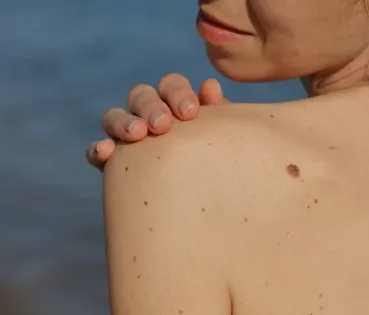
This is what your nails reveal about your health
The appearance of someone’s nails can be a sign of underlying health conditions or problems. In this article we review some of the most common cases.
The health and appearance of nails isn’t just an aesthetic issue. According to the Spanish Academy of Dermatology and Venereology, the state of our nails can be a reflection of certain health problems. It is therefore essential to pay attention to possible changes.
How nails can change and the possible causes
Certain changes in the appearance of the nails may be related to imbalances or be a sign of disease. For example:
- Thin, soft nails may be a sign of a number of chronic diseases, such as arthritis (rheumatic disorders) or thyroid problems. However, weak nails can also be caused by constant exposure to water or frequent permanent manicures. Sometimes even longitudinal grooves or cracks appear in the distal part of the nail, a condition known as onychorrhexis.
- Discolouration and thickening of the nail. These symptoms can be signs of onychomycosis, a fungal infection that can lead to the destruction of the nail plate. It is most common in toenails.
- When the lunula expands to cover practically the whole nail, a condition known as Terry's nails, this can be a sign of cirrhosis, kidney or heart failure. The lunula is the whitish, crescent-shaped area that appears at the base of the nails, especially on the thumb.
- Spoon-shaped or indented nails (koilonychia) may be caused by iron deficiency, as in the case of anaemia, or excess iron (haemochromatosis).
- Yellowish nails may be a symptom of respiratory problems, such as chronic bronchitis or pneumonia. However, it could also be a sign of onychomycosis.
- Blue-coloured nails, on the other hand, may be a sign of hypoxia, i.e. when oxygen levels in the blood drop and the supply to the many tissues around the body is compromised. This symptom can be linked to lung disease, heart disease or exposure to low temperatures.
In many cases, the onset of small changes in the nails is irrelevant and may be due to trauma or impact. However, it is important to notice if these changes persist or are accompanied by pain, swelling or redness.
Tips and recommendations for nail care
- Maintain good nail hygiene, keeping them clean and dry. It is advisable to trim them often to avoid dirt build-up and minimise the risk of breakage.
- Follow a balanced and sufficient diet in order to avoid nutritional deficiencies, particularly of protein, zinc, calcium, iron, etc.
- Maintain good hydration.
- Wear gloves when washing dishes and handling cleaning chemicals.
- Check if there are significant changes in the shape, colour or texture of the nails, so that a health professional can be consulted.
- If needed, use a moisturising cream or oil to hydrate both nails and cuticles.
- Do not remove cuticles, as their absence increases the risk of infection.
Ultimately, the appearance of your nails is a reflection of your health. Taking care of your nails can prevent the development of nail disorders. Likewise, if there are any unusual or persistent changes, it is advisable to see a dermatologist.




